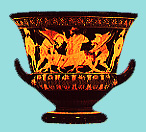 GREEK
ART OF POETRY
GREEK
ART OF POETRY GREEK
ART OF POETRY
GREEK
ART OF POETRY
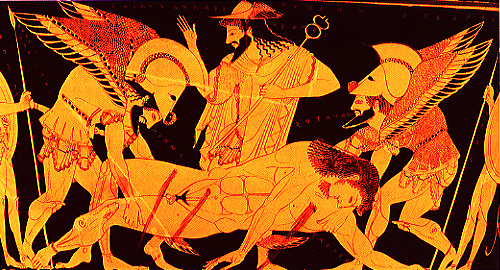
This Krater by the painter and potter Euphronious shows the dying Sarpedon, son of Zeus. As Hermes looks on the brothers Death and Sleep carry him from the scene of battle.
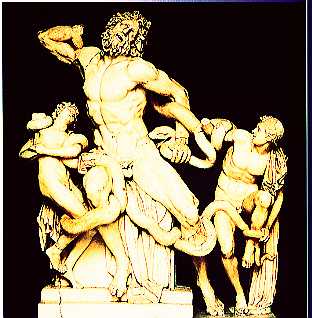
This hellenistic statue is attributed by Pliny to have been sculpted by Athanadoros, Hagesandros and Polydoros--all of whom are thought to have worked in the early first century A.D. It depicts the strangling of the Trojan Priest Lacoon and his two sons by a serpent sent by the gods. This is the consequence of the God's displeasure with Lacoon for trying to foretell the true contents of the Greek's Wooden Horse.
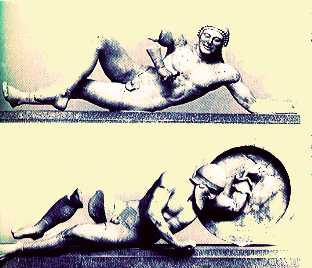
The above picture is of a dying warriour from the west pediment of the Temple of Aphaia at Aegina. Notice that he smiles, signifying that he belongs to the Archaic mode of sculpting. In contrast the lower statue from the east pediment of this same building shows the pain of dying and, consequently, belongs to a latter period.
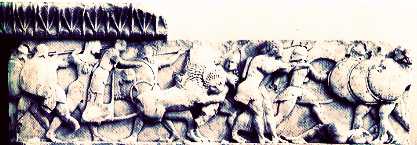
This frieze comes from the north side of the Siphnian Treasury and depicts the theme of the gigantomachy. It shows, going from right to left, Apollo and Artemis folloing a running giant, behind them is Themis riding a chariot, yet behind her is Dionysos.
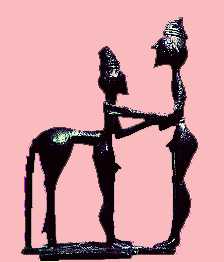
This bronze statue belongs to the Geometric Period, c. eight century B.C. The depiction is of a hero, probably Herakles, battling a centaur.
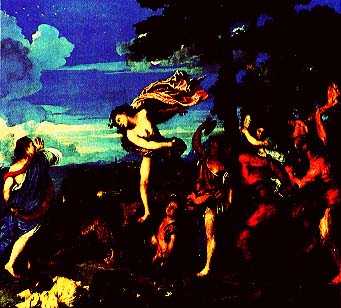
Titian's Bacchus and Ariadne, 1522-23.
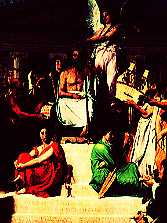
Jean-Auguste-Dominique Ingres, Apotheosis of Homer, 1827.
 LINKS
TO MORE ART
LINKS
TO MORE ART
Greek
Vase Catalog
Tufts University
Ancient
Greeks Virtual Tour
British Museum
Mythology
in
Western Art
University of Haifa
Greek
Mythology Images
Princeton University
Greek
Civilization and Culture: Image directory
University of Montana